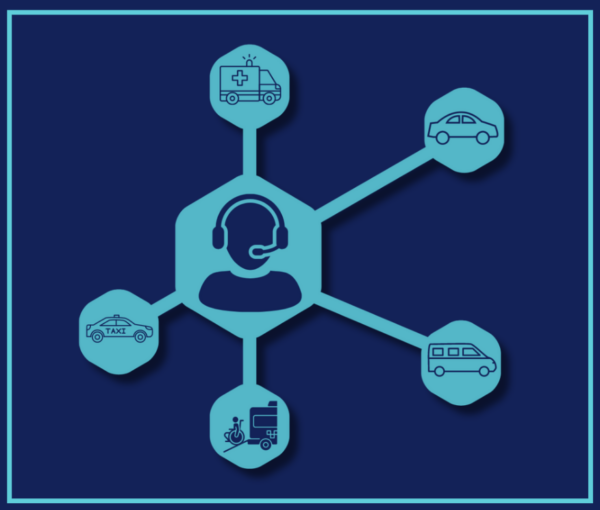Now that you have defined the components of a community and established your provider network, let’s discuss how you can most effectively allocate rides within the community. It’s crucial to recognize that each hospital has unique requirements that will impact their approach to this process.
Choosing a Transportation Community Model
Within each Transportation Community, there should be a model in place defining how and when your hospital staff selects different transportation partners, rather than selecting transportation partners at random. While your hospital may already have a model in place, it’s essential to assess whether this model aligns with your needs and goals. Below, we’ve outlined various community model types for your consideration. Please note that such models are most effectively standardized and scaled using automated, computer-based ride booking methods.
Auto-Assign
In an auto-assign community model, a single transportation company is designated to automatically receive all trip requests and is granted the initial right of refusal. If they choose to decline the ride request, the hospital will offer it to other transportation providers within its community.
Preferred Status
In a preferred status community model, a select group of transportation providers receive all ride requests first and can submit their estimated time of arrival (ETA). The transportation provider with the closest ETA to the requested pick-up time is selected to provide the transportation service.
Round-Robin
In a round-robin model, multiple transportation partners get preference on a rotational basis. For example, if there are four preferred partners, each transportation provider would have the opportunity to be the first to view the ride request for one-fourth of the time, rotating in turns.
Ride Booking Methods

Organizations have multiple options for booking rides with transportation partners. While traditional methods such as fax and phone calls remain prevalent, healthcare organizations are increasingly moving to computer-based methods like instant messaging apps, email, and dedicated software applications. We strongly recommend leaving outdated methods behind. Faxes and phone calls increase the time spent on tasks like tracking individual responses from transportation partners and introduce the potential for errors in information exchange. Instead, create a single digital workflow for users at your organization, regardless of vehicle type, payer type, or facility.
If you’re interested in learning more about the different ride-booking methods, check out our full transportation e-book.

